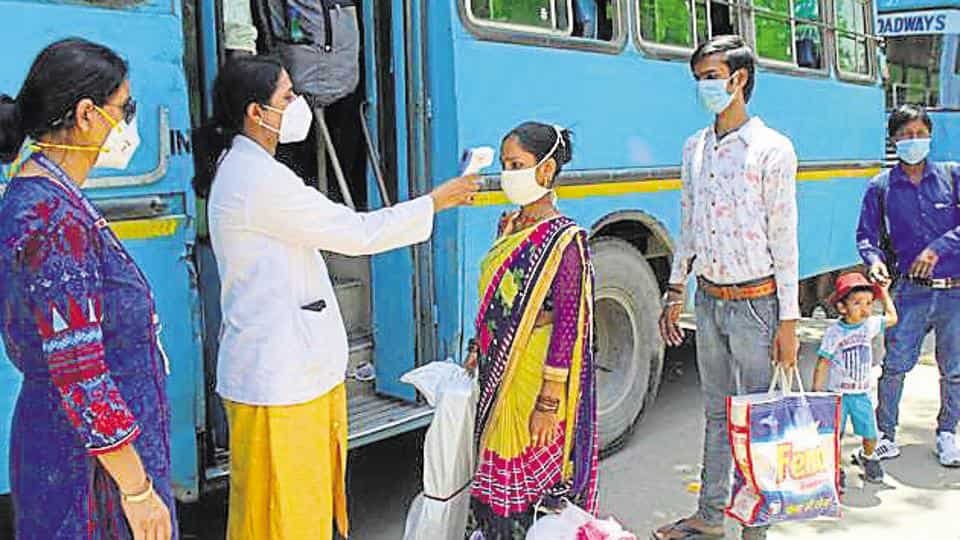
|
Getting your Trinity Audio player ready...
|
It extended monetary support through various routes. Now, states must step in, end the political blame game
Eight decades after he formulated his General Theory, John Maynard Keynes remains a demigod to many liberal economists. Keynes’ “trickle-up” theory is seen by them as a panacea for the migrant working class affected by the coronavirus disease (Covid-19). Keynes suggested that to kickstart a stagnant economy, the government must boost demand by cutting taxes, increasing government spending and putting money in the pockets of the middle-class.
Keynes’ disciples in the Opposition are criticising the finance minister (FM)’s package for not making direct money transfers into the accounts of the poor. The government has already extended substantial support to the rural poor, including migrant workers. The rabi crop has been purchased by the government at the cost of Rs 75,000 crore which has benefitted over 90 million farmers. Additionally, Rs 19,000 crore has been deposited into the bank accounts of eligible farmers under PM Kisan. A crop insurance bill of Rs 6,000 crore has been paid. Women from over 300 million poor families have been receiving Rs 1,500 over three months in their Jan Dhan accounts.
To top this, the FM announced the allocation of a little over Rs 1,00,000 crore for the Mahatma Gandhi National Rural Employment Guarantee Scheme (MGNREGS) taking the total man-days available for the rural poor to 300 crore. Estimates by economists suggest that around Rs 12,000 have gone directly into the accounts of every single poor family through these measures. All this came from the Centre, with the states doing their bit.
Yet, there is distress manifested in the large-scale flight of migrant workers from destination states such as Maharashtra, Gujarat, Punjab, Rajasthan, Haryana, Tamil Nadu, Karnataka and Telangana to the home states of Uttar Pradesh (UP), Bihar, Jharkhand, West Bengal, Orissa, Chhattisgarh and the Northeast. There has been a lot of politics over this.
The migrant issue in such circumstances is complicated. And it isn’t unique to India. Many countries in Europe such as Spain, Germany, Italy and France are struggling with issues of farm workers who migrate in the harvest season from Eastern European countries. “Host countries are torn between fear of losing harvests, fear of importing infection and a fear that predates the pandemic — that of foreigners taking jobs. Populists sense opportunity as the economic fallout solidifies political battle lines”, according to a piece in The Guardian.
India’s migrant population is over 130 million. Their movement en masse back to their home-states would have been an unmitigated disaster. To prevent this, the Centre turned its attention to agriculture and micro, small and medium enterprises (MSMEs). Over 44% of India’s workforce is dependent on agriculture. The government’s decision to allocate Rs 1 lakh crore for farm-gate infrastructure development is to ensure that the workforce is engaged in productive agricultural activity. Of the rest, 70% of jobs are provided by the MSME sector. The government gave the sector high priority by arranging additional easy lending options to the tune of over Rs 400,000 crore.
Compared to the fiscal measures taken by other G20 countries, India has done better than most. According to an International Monetary Fund report, the aggregate fiscal measures as a percent of GDP are in two dimensions — spending and revenue measures; and loan, equity and guarantee measures. Germany, which topped the fiscal relief chart had announced 1% of GDP in additional spending and 6% in loan guarantees. India, with a stimulus package of 10% of GDP, is well ahead of its G20 peers.
It must be remembered that while a section of the migrants undertook their homebound journey, a large number stayed back. There are two important reasons for it. One, the appeal to employers by Prime Minister (PM) Narendra Modi to continue paying wages; and two, the government’s stimulus to MSMEs and agriculture.
Migrants have been supported by states and non-governmental organisations during the lockdown. Yet, their anxiety to get back to their families and villages has pushed many to defy the lockdown and set off home. To manage this migration, a coordinated approach was needed between the Centre and the states, and between destination and origin states. Uttar Pradesh has set an example by arranging to ferry not only its own migrants, but also those bound for neighbouring Bihar, in over 1,200 buses. It alone received and transported over two million workers to their destinations.
Gujarat has quickly arranged trains for these migrants while Maharashtra has been found wanting. The role played by the Indian Railways is exemplary. It has so far transported over two million migrants to their home states. Bihar and West Bengal are two states that did not show enough interest in receiving its own migrants, leading to huge numbers being stranded in Mumbai and Delhi. Madhya Pradesh, though neither a destination nor a home, has come forward with 1,000 buses to help the migrants reach their destinations.
Leo Varadkar, former PM of Ireland, joined European Union leaders a few weeks ago supporting the movement of cross-border agriculture workers. Back home, he was critical of a Dublin fruit company for bringing in Bulgarian workers to pick strawberries. Similarly, the Opposition criticises the Centre for the migrant crisis, while the origin or destination of the migrants is in the states under its control. What we need today is collective federal action to address the migrant issue, not the political blame game we are witnessing.
(The article was originally published in Hindustan Times on May 26, 2020. Views expressed are personal.)




Very good Article, with reality,to Counter the Sinister designs off Motivated utterances of distructive opposition leaders
It’s a good thought,the government must boost demand by cutting taxes,increasing government spending and putting money in the middle-class